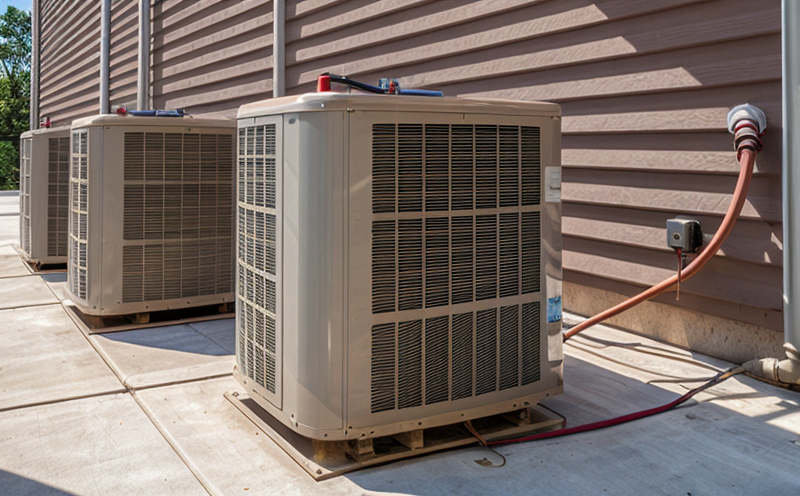ASHRAE 55 Thermal Environmental Conditions for Human Occupancy
The ASHRAE Standard 55-2017 provides guidelines on how to design and evaluate the thermal environment of spaces occupied by humans. This standard ensures that indoor environments are comfortable, healthful, and safe for human occupants. The standard is widely recognized and applied in building design, construction, and operation.
The ASHRAE 55-2017 focuses on four key parameters: temperature, humidity, air movement, and radiant heat balance. These parameters are critical to creating a comfortable environment for human occupants. The standard defines conditions that should be met in order for the thermal environment to be considered acceptable.
Temperature is one of the most important factors in ASHRAE 55-2017. It specifies the temperature range within which comfort can reasonably be expected. Typically, this range falls between 68°F and 74°F (20°C to 23.3°C). However, individual tolerance for these ranges may vary based on personal preferences.
Humidity is another crucial aspect of the thermal environment. The standard recommends a relative humidity level of approximately 45% to 60%. This range helps prevent discomfort caused by overly dry or humid conditions. High humidity can lead to mold growth and other health issues, while low humidity can cause skin irritation.
Air movement plays an important role in maintaining thermal comfort. The standard suggests a minimum air velocity of about 25 feet per minute (0.13 meters per second) at the face level. Proper ventilation ensures that fresh air is supplied to the space, which helps remove pollutants and excess heat.
Radiant heat balance refers to the relationship between the radiant heat from surfaces within a space and the convective heat transfer in the space. This factor can significantly affect thermal comfort. For example, if the radiant heat balance is too high, it may cause discomfort due to overheating of the occupants.
The ASHRAE 55-2017 also considers the impact of individual clothing and activity levels on thermal comfort. Occupants with higher metabolic rates or wearing more layers of clothing are generally less sensitive to changes in environmental conditions. Therefore, the standard provides a method for adjusting design parameters based on these factors.
The standard emphasizes that achieving ASHRAE 55-2017 compliance can lead to significant benefits beyond just comfort. For example, it can improve productivity and reduce absenteeism due to health issues related to poor indoor environments. Additionally, compliant designs often result in lower energy costs by optimizing heating, ventilation, and air conditioning (HVAC) systems.
Testing for ASHRAE 55-2017 compliance involves several steps. First, the building or space must be designed with appropriate HVAC systems that can achieve the specified temperature and humidity levels. Then, during construction or after installation, field measurements are taken to verify these conditions.
Testing for air movement typically involves placing thermocouples at various points within the space to measure air velocity. Radiant heat balance is assessed by comparing surface temperatures with the average air temperature in the room.
The results of these tests are then compared against the guidelines provided in ASHRAE 55-2017. If all parameters fall within acceptable ranges, the space or building can be considered compliant with this standard.
Compliance testing is crucial for ensuring that buildings and spaces meet the needs of their occupants while maintaining energy efficiency and sustainability. It provides a framework for designing and evaluating thermal environments in a way that promotes human health and well-being.
Eurolab Advantages
Eurolab is dedicated to providing top-tier testing services, ensuring that our clients receive accurate, reliable, and timely results. Here are some of the key advantages:
- Advanced Testing Facilities: Our state-of-the-art laboratories offer comprehensive testing capabilities across a wide range of industries.
- Expert Technicians: Our team comprises highly skilled and experienced professionals who possess in-depth knowledge of ASHRAE standards and other relevant guidelines.
- Comprehensive Reporting: We provide detailed reports that not only state the results but also offer insights into potential improvements for future designs or operations.
- Fast Turnaround Times: Eurolab prides itself on delivering results quickly, allowing clients to make informed decisions promptly.
International Acceptance and Recognition
The ASHRAE Standard 55-2017 is widely recognized internationally for its comprehensive approach to thermal comfort. Many countries have adopted this standard as a benchmark for indoor environmental quality in buildings.
In Europe, the European Committee for Standardization (CEN) has developed EN ISO standards that align closely with ASHRAE 55-2017. These standards are used extensively across member states to ensure consistent and high-quality environmental conditions.
Other regions also follow suit, ensuring global consistency in design and operation of HVAC systems. This international acceptance highlights the importance of this standard in promoting healthy, comfortable, and energy-efficient indoor environments worldwide.
Competitive Advantage and Market Impact
Compliance with ASHRAE Standard 55-2017 provides significant competitive advantages for businesses operating in the building and infrastructure sectors. Companies that adhere to this standard are likely to experience higher customer satisfaction, improved worker productivity, reduced absenteeism, and lower operational costs.
In a market where sustainability is increasingly important, compliance with ASHRAE 55-2017 can help businesses meet environmental goals set by regulatory bodies and certification programs. This not only enhances their reputation but also opens up new opportunities for growth in the green building sector.
Moreover, companies that demonstrate a commitment to high standards of indoor environmental quality are more likely to attract top talent, which is crucial for maintaining competitive edge in today's labor market.





